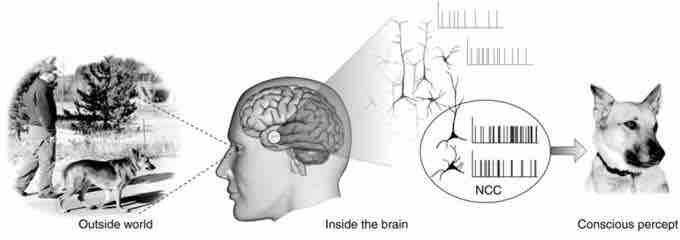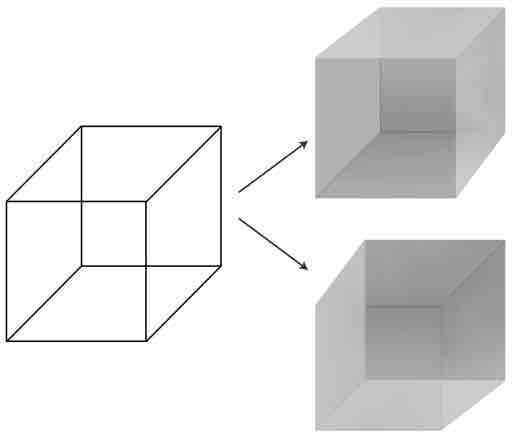Consciousness is the awareness of the self, the environment, and the relationship between these two distinct worlds. From ancient philosophers to modern-day scientists, many people have struggled to understand, research, and document the processes involved in human consciousness. Thanks in large part to advances in medicine, science, and psychology, we have learned much about how states of consciousness are created. Current research studies the neural correlates of consciousness by examining experiences reported by subjects and recording the simultaneous activity that takes place in their brains. Researchers continue to search for brain activity or global brain patterns that can be predictive of conscious awareness.
Neural Correlates of Consciousness (NCC)
The neural correlates of consciousness (NCC) refer to the relationship between the experiences reported by subjects and the activity that simultaneously takes place in their brains. The physical world is perceived by human consciousness through the senses, which funnel stimuli and information into the central nervous system, and eventually the brain. The brain is the major organ implicated in turning physical stimuli into thoughts and actions. The study of NCC seeks to link objective, observable, neural activity to subjective, unobservable, conscious phenomena. While discovering and characterizing neural correlates cannot offer its own theory of consciousness, the data and findings may one day lead to such a discovery.

Neural correlates of consciousness
The study of neural correlates of consciousness seeks to link activity within the brain to subjective human experiences in the physical world.
Neural networks have been found to have a large amount of redundancy and parallelism, such that activity in one set of neurons cannot necessarily be said to correlate with the same perception over time. Scientists believe it may be the case that every phenomenal, subjective state has its own neural correlate. Continued advances in the ability to stimulate or induce activity in certain brain regions or sets of neural networks will help scientists answer ever more complicated questions about the characteristics and commonalities among neural correlates.
Neurobiology and Consciousness
The science of consciousness sets out to explain the precise relationship between subjective mental states and brain states, the relationship between the conscious mind and the electro-chemical interactions in the body. Progress in this arena has come from focusing on the body rather than the mind. In this context, the neuronal correlates of consciousness may be viewed as its causes, and consciousness may be thought of as a state-dependent property of some complex, adaptive, and highly interconnected biological system.
Most neurobiologists assume that the variables giving rise to consciousness are to be found at the neuronal level, governed by classical physics. More than ever before, neuroscientists are able to manipulate neurons using methods from molecular biology combined with state-of-the-art optical tools (e.g., Adamantidis et al., 2007). Neuronal analysis and brain imaging techniques have become so fine-grained that a rational understanding of consciousness is within reach.
Dimensions of Neural Consciousness: Arousal and Content
Neuronal consciousness is often described as involving two distinct dimensions: arousal and content. In order for the brain to be conscious of any type of content, it must be in a high state of arousal. While awake and dreaming states are fundamentally different states of consciousness, they are both high-arousal, and thus allow for perception. Sleep is just one of the many types of consciousness we can experience and comprises several states of consciousness itself. Consciousness can also be phenomenal, such as our experiences in real time, or access, such as recalling a state of being or feeling.
Brain Areas Implicated in Consciousness
Another idea that has drawn attention for several decades is that consciousness is associated with high-frequency (gamma band) oscillations in brain activity. This idea arose from proposals in the 1980s, by Christof von der Malsburg and Wolf Singer, that gamma oscillations may link information represented in different parts of the brain into a unified experience.
Several studies have demonstrated that activity in primary sensory areas of the brain is not sufficient to produce consciousness: it is possible for subjects to report a lack of awareness even when areas such as the primary visual cortex show clear electrical responses to a stimulus. Higher brain areas are seen as more promising, especially the prefrontal cortex, which is involved in a range of executive (higher-order) functions. There is substantial evidence that a "top-down" flow of neural activity (i.e., activity propagating from the frontal cortex to sensory areas) is more predictive of consciousness than a "bottom-up" flow of activity. The prefrontal cortex is not the only candidate area, however: studies have shown that visually responsive neurons in parts of the temporal lobe reflect the visual perception in the situation when conflicting visual images are presented to different eyes.
Brain Imaging and Consciousness
One popular theory implicates different patterns of brain waves in producing different states of consciousness. Researchers can record brain waves, or tracings of electrical activity within the brain, using an electroencephalograph (EEG) and placing electrodes on the scalp. The four types of brain waves (alpha, beta, theta, and delta) each correspond with one mental state (relaxed, alert, lightly asleep, and deeply asleep, respectively).
Functional magnetic resonance imaging (fMRI) scans, can also be used to measure physical activity in the brain that correlates with different conscious states and perceptions. The ease in which visual perceptions can be manipulated in time and space has made visual studies, such as the Necker cube, one of the most preferred modalities for studying the neural correlates of consciousness. These studies take a seemingly simple and unambiguous visual stimulus and record differences in its subjective perception by a study participant. The cube, for instance, is 12 basic lines that can be interpreted in two different depths, creating a visual illusion. Scientists are interested in locating which neural correlates lead to differing mental interpretations.

The Necker cube
The Necker cube is a popular visual stimulus used to study differences in human visual perception. It is possible to perceive the front of the cube at two different angles.